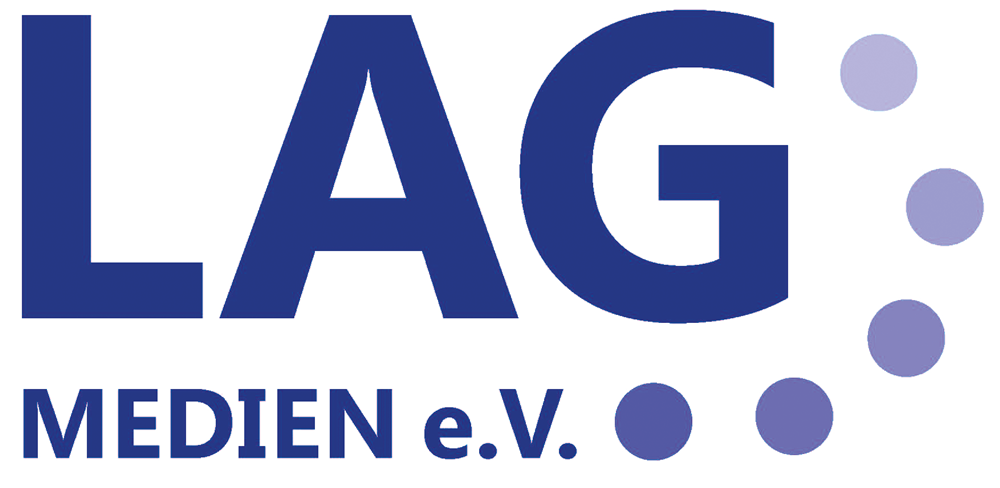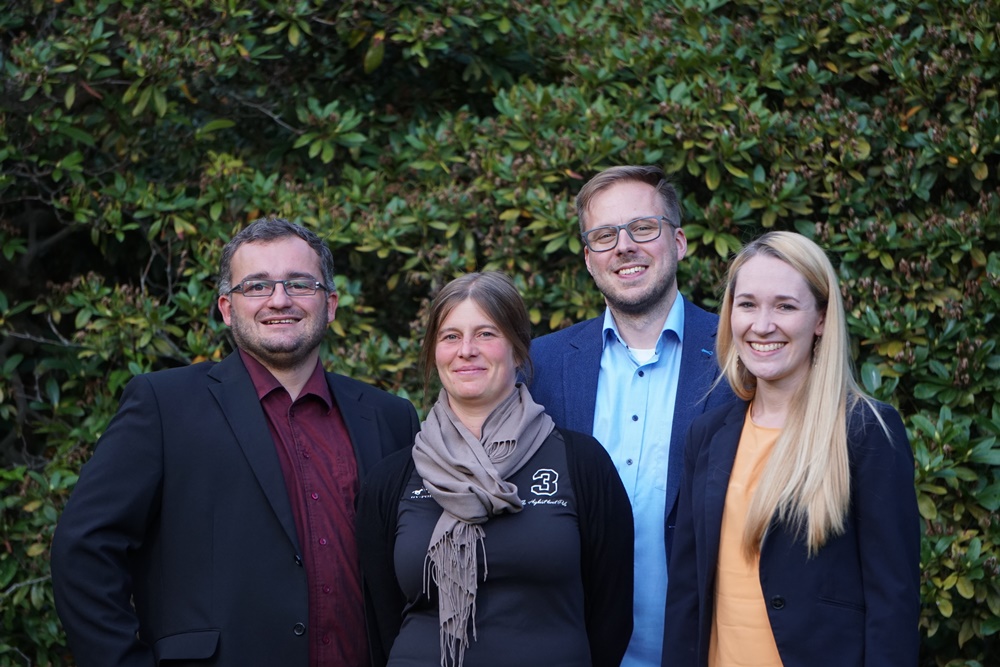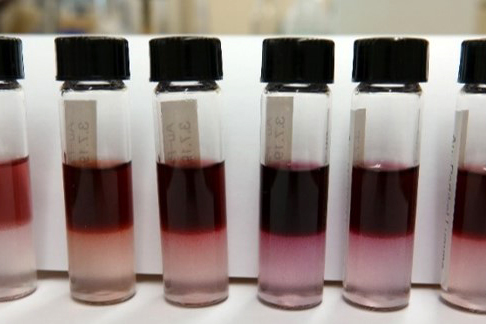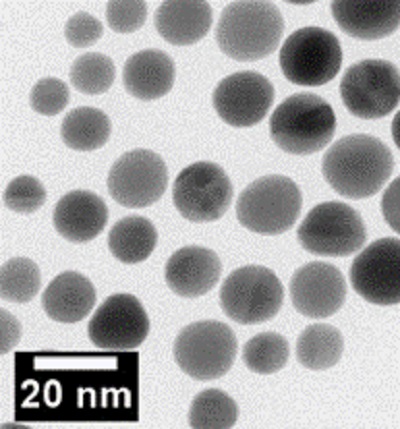P3 1-2/2021 en
TU Bergakademie Freiberg
Inexpensive Inkjet Inks for the Electronics Industry
Printed Electronics
Young scientists from the Freiberg start-up “NaPaGen” will in future be able to use an innovative production system to produce high-purity precious metal nanoparticles. This produces inks of improved quality for inkjet printing of electronic components and applications for smart systems as well as for vehicle and aircraft construction.
The NaPaGen team around (from left) Dr. Maik Gerwig, Bedia Jüttner, Frederic Güth and Nadja Lumme.
Precious metal nanoparticles form the material basis of conductive inkjet inks in printed electronics. Their composition is decisive for the quality of the inks used industrially. However, the shape and size of the nanoparticles in the inks can vary from batch to batch, as the production of nanoparticles is difficult to control. The quality of the currently available inks varies accordingly. This is where the four young scientists headed by NaPaGen project manager Nadja Lumme come in: “We have transferred the synthesis of the nanoparticles from a classic batch process, in which chemicals are manually mixed, into an automated and continuously operating system. This allows us to specifically influence the synthesis and control the properties of the nanoparticles. The innovative production system also improves the quality of the nanoparticles. They are reproducible and production costs can be saved by automating the closed system. This combination leads to high-quality nanoparticle suspensions and inks on customer request.”
Application in wearables, smart systems as well as in vehicle and aircraft construction
The printed electronics market has grown enormously in recent years and is becoming increasingly complex. It now includes smart systems and wearables as well as the mobility and entertainment industries. The market for printed sensors alone is forecast by IDTechEx at 4.5 billion US dollars in 2030. Many small and large companies take the plunge into printing conductor tracks and the like in order to improve existing applications or to generate new ones. The more sustainable use of materials will also play an important role in the industry in the future.
Interdisciplinary EXIST research transfer brings together young researchers from four courses
Nadja Lumme's NaPaGen team is interdisciplinary. The alumna of the TU Bergakademie studied applied natural sciences until 2016 and started her research in the field of nanoparticle synthesis at the Institute for Electronics and Sensor Materials as part of a state innovation grant. The other three founders also completed their Masters at TU Freiberg. Frederic Güth completed his master's degree in electronics and sensor materials in 2014, Bedia Jüttner graduated with a master's degree in business administration in 2015, and Maik Gerwig studied chemistry until 2014, before successfully defending his dissertation last year.
It is no coincidence that the budding start-up should also be based in Freiberg: “We really appreciate Freiberg as a location for science. As a small but fine university, the paths between students, doctoral candidates, post-docs and professors are short and direct. Over the years, a great network has developed that ultimately brought the four of us from different areas together. Of course, we owe our studies at the TU Bergakademie Freiberg primarily for our specialist knowledge, without which we would not be able to set up a spin-off on such a demanding scientific playground, ”says Nadja Lumme.
The start-up will be financed until September 2022 as part of an EXIST grant from the Federal Ministry for Economic Affairs and Energy. The start-up network SAXEED of the TU Bergakademie Freiberg supports and accompanies the founders since the application was submitted over the entire duration of the project with weekly meetings, a structured workshop program and step-by-step pitch days with expert feedback.









